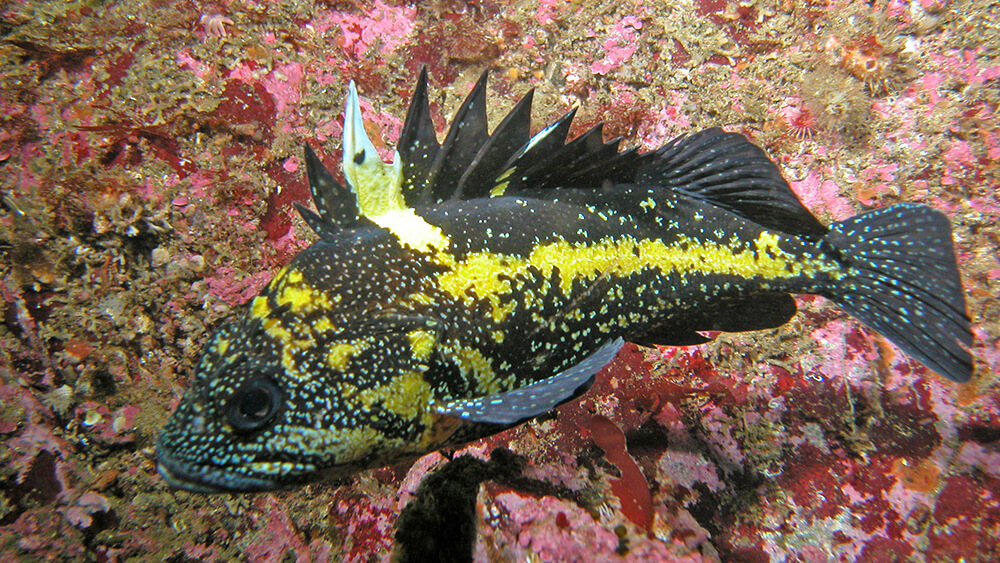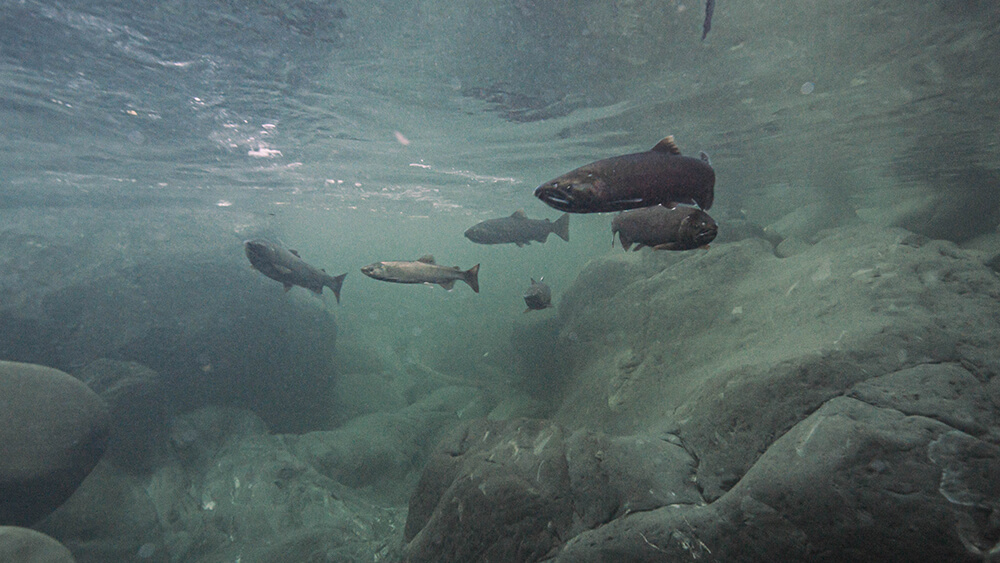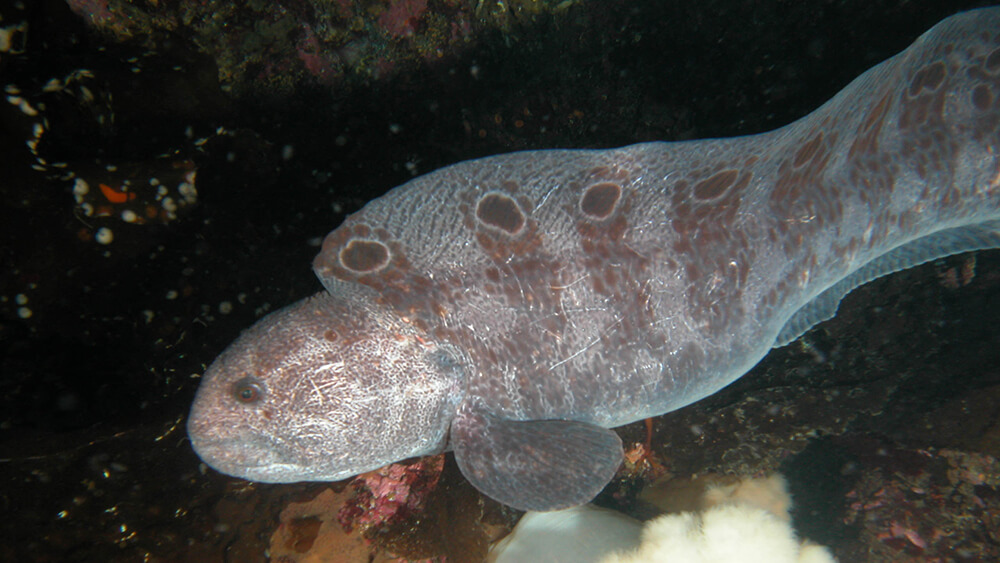Fish

The cold, temperate waters of the Olympic Coast are some of the most productive habitats for fish in the world. Long known for salmon and halibut, the Olympic Coast is also rich in rockfish and other ecologically-important fish species. Forage fish such as Pacific herring, surf smelt, and eulachon feed in nearshore and pelagic waters of the sanctuary and are important components in the marine food web.
The diverse and abundant fish fauna in Olympic Coast National Marine Sanctuary are significant commercial and recreational resources. The same environmental factors that determine distribution, abundance, and species composition of other living resources of the area also affect fish communities. The diverse habitats of the sanctuary each claim their own characteristic communities of fish.
Fish of the nearshore sublittoral habitat show the greatest diversity and include many commercially important species. Salmon are “anadromous.” That means they spend most of their life in saltwater but return to freshwater to spawn at maturity. Seven species of Pacific salmon occur along the Olympic Coast: Chinook, sockeye, pink, chum, and coho, along with sea-run cutthroat trout and steelhead. Other species include albacore tuna, Pacific halibut, flounder (starry and arrowtooth), sole (petrale, Dover, English), numerous species of rockfish, Pacific cod, Pacific hake, lingcod, sablefish, thresher shark, Pacific herring, northern anchovy, jack mackerel, pollock, spiny dogfish, green and white sturgeon.

Fishes associated with sandy intertidal areas include starry flounder, staghorn sculpin, sand lance, sand sole, redtail surfperch, and sanddab. Surf smelt spawn at high tide on sandy beaches where surf action covers and aerates the eggs.
The rocky intertidal habitat is characterized by a rather small and specialized group of fish adapted for life in tidepools and wash areas. These fishes include tidepool sculpin, wolf eel, juvenile lingcod and greenling, gunnels, eelpouts, pricklebacks, cockcombs, and warbonnets.
Many of the finfish found in shallow rocky reefs are also common in kelp beds. Kelp forests increase the available habitat for pelagic and bottomfish species, and offer protection to juvenile fish. The numerous species of rockfish are the dominant fish. Other common species include lingcod, kelp greenling, cabezon, kelp perch, wolf eel, and red Irish lord.

Salmon and groundfish are the most economically significant species in the sanctuary. The region is not only important for those salmon that spawn in streams on the Olympic Peninsula adjacent to the sanctuary, but includes the migration corridors of both juvenile and adult salmonids from California, Oregon, and British Columbia as well.
Offshore areas are the most important areas for commercial harvests of groundfish, such as Pacific ocean perch, lingcod, English sole, Dover sole, Pacific cod, and sablefish. It is important to note, however, that four of the top ten fishes commercially harvested along the outer coast of Washington (Chinook, coho, and chum salmon, and lingcod) are either estuarine-associated (i.e., they use estuaries during some time in their lives) or estuarine-dependent (i.e., they require estuaries to complete their life cycles). Additionally, the top four recreational species for Washington (Chinook and coho salmon, steelhead, and lingcod) all use estuaries as juveniles.

